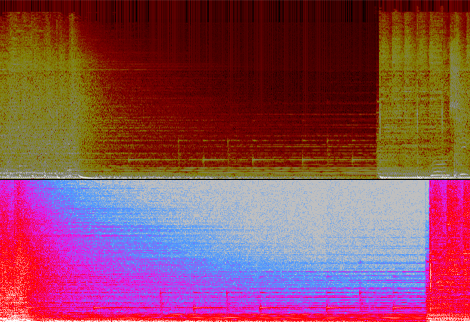I have started looking into DSP and made an implementation of short-time fourier transform, using kissFFT to perform the FFT. I then render a spectrogram.
An example image that I have generated can be seen below. On top is the spectrogram of a music file from my implementation and under it is the spectrogram of the same section generated from audacity.

My concern is the vertical lines that show up from my implementation, which are most visible in the higher frequencies. They may interfere with other stuff I will try to do later on. Has anyone ever had the same problem or know the cause? How can I get rid of them?
Additional information: I use hamming window with 50% overlap (using different windows has not helped)
